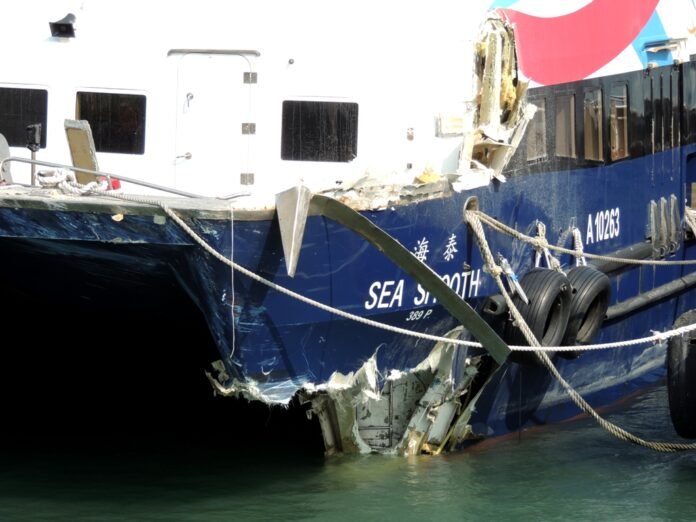The KMP Tunu Pratama Jaya ferry sank in the Bali Strait after midnight on Wednesday, resulting in at least four deaths and many missing. The ferry was traveling from Ketapang port in East Java to Gilimanuk in northern Bali. It sank about five kilometers from its destination due to rough seas and bad weather.
Vessel Capacity and Passenger Numbers
The National Search and Rescue Agency (BASARNAS) reported the ferry manifest showed 53 passengers, 12 crew, and 22 vehicles. Yet, survivor accounts and local practices indicate that real passenger numbers frequently surpass the manifest in Indonesia’s bustling inter-island ferry routes.
The ferry, certified for 20 passengers, was overloaded with 65 people when it left Ketapang. Authorities are working to confirm the exact number on board, aware that passenger lists are often unreliable in isolated maritime areas.
Survivor Accounts
Survivor Supardi described the ferry’s abrupt tilt: “I climbed onto the roof to jump, but it sank too fast.” He and two others clung to life jackets in 3–4-meter waves. Tragically, a fourth person on their makeshift raft drowned before rescue teams arrived..
BASARNAS reports that many of the 31 rescued passengers were found unconscious after drifting for hours in darkness. Search teams performed CPR on site, and several survivors regained consciousness while being transported to medical facilities in Java and Bali.
Search and Rescue Operations
Nine vessels, including tugboats, inflatable crafts, and fishing boats, searched the waters from the sinking site to Gilimanuk port. Indonesian navy helicopters joined the search at dawn, and dive teams got ready to check for underwater wreckage.
Tough weather, with heavy rain, strong winds over 30 knots, and poor visibility, hindered the search efforts. BASARNAS leader Nanang Sigit stressed the priority on surface searches: “We are focused on finding passengers in the water between the crash site and Gilimanuk.
Anxious Vigil at Ketapang Port
Relatives gathered at Ketapang’s ferry terminal, anxiously monitoring radio and mobile updates. Tearful family members comforted one another as they awaited word of loved ones. Local volunteers set up a crisis center, offering emotional support and coordinating incoming information with rescue officials.
MetroTV reported no foreign nationals were on the passenger list. Australia’s Foreign Affairs Department confirmed contact with its Bali consulate, with no Australians reported among the victims.
Government Response and Official Statements
President Prabowo Subianto, speaking from Saudi Arabia, ordered an urgent review of maritime safety rules. Cabinet Secretary Teddy Indra Wijaya blamed “bad weather” as the main issue but admitted there are ongoing problems with ferry supervision.
Transportation Minister Budi Karya Sumadi declared tighter control over ship capacity, mandatory inspections, and improved crew training. “We must learn from every tragedy to ensure our waters are safe,” he said, promising a detailed investigation into the sinking.
Context: Frequent Ferry Disasters in Indonesia
Indonesia, with over 17,000 islands, relies heavily on ferries for transport. Yet, old ships, overcrowding, and lax safety enforcement often lead to maritime accidents.
Maritime safety experts demand swift fleet upgrades, real-time passenger tracking, and compulsory automatic identification systems (AIS) on inter-island ships. “Accurate manifests and vessel monitoring are essential to saving lives,” stated Admiral Gusman Rizal, ex-navy commander.
Next Steps in Rescue and Investigation
Search teams will conduct surface sweeps until Friday, weather allowing. Afterward, they will shift to focused underwater sonar scans. Any underwater wreckage will be inspected for more survivors or clues about the sinking’s cause.
Formal Accident Inquiry
A maritime accident board will meet next week at Ketapang port. They will analyze the ship’s maintenance records, crew skills, and weather data. Initial results are expected in 30 days, with a full report by the end of the year.
Conclusion
The KMP Tunu Pratama Jaya disaster highlights ongoing safety issues in Indonesia’s ferry industry. As families grieve and survivors heal, officials are urged to reform regulations and update the old fleet. With over 30 passengers still unaccounted for, the search in the turbulent Bali Strait starkly illustrates the tragic consequences of weak oversight in a nation heavily reliant on ferries.
